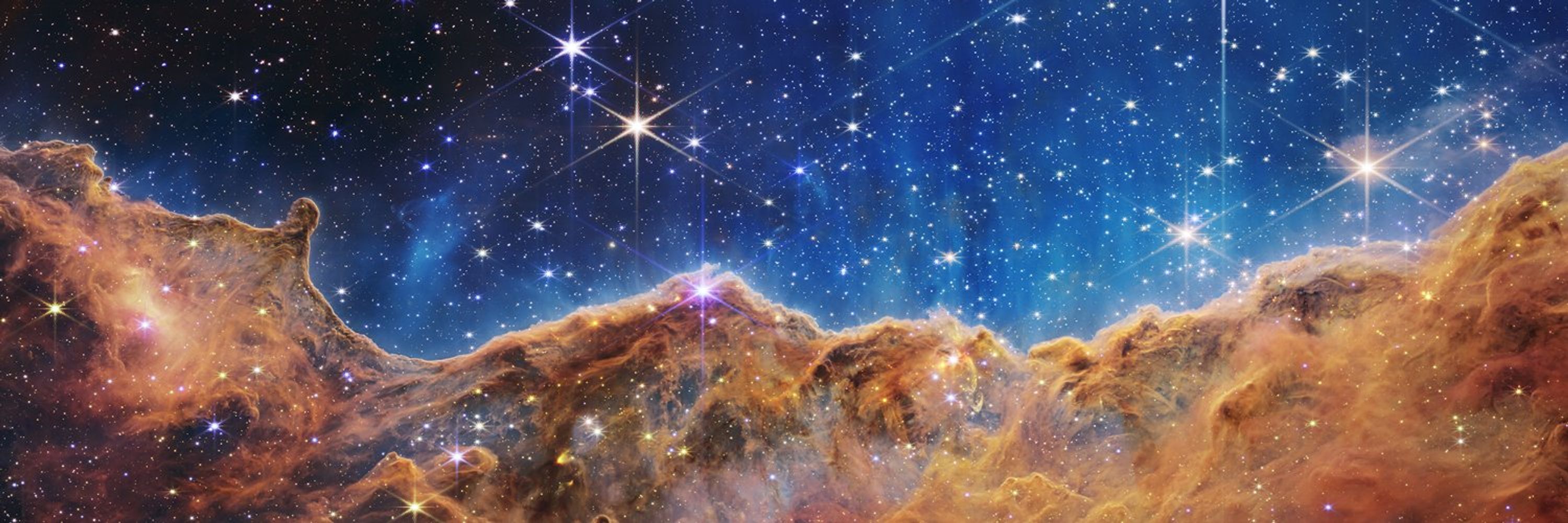
NASA Webb Telescope
@nasawebb.extwitter.link
⚠️ MIRROR OF twitter.com/NASAWebb
⚠️ If you own the original account and want to claim this, please contact @twttr-mirrors.bsky.social
⚠️ If you own the original account and want to claim this, please contact @twttr-mirrors.bsky.social
Learn more about gravitational lensing in this @NASAGoddard Glossary!
October 12, 2025 at 7:58 PM
Learn more about gravitational lensing in this @NASAGoddard Glossary!
Nature’s magnifying glass 🔎
Galaxies in these images might look stretched or warped. That’s due to gravitational lensing, a tool that allows us to peer even further into the universe! https://go.nasa.gov/3KLgN9Y https://pbs.twimg.com/media/G2GJ7ibW0AA2ZMm.jpg
Galaxies in these images might look stretched or warped. That’s due to gravitational lensing, a tool that allows us to peer even further into the universe! https://go.nasa.gov/3KLgN9Y https://pbs.twimg.com/media/G2GJ7ibW0AA2ZMm.jpg

October 12, 2025 at 7:57 PM
Nature’s magnifying glass 🔎
Galaxies in these images might look stretched or warped. That’s due to gravitational lensing, a tool that allows us to peer even further into the universe! https://go.nasa.gov/3KLgN9Y https://pbs.twimg.com/media/G2GJ7ibW0AA2ZMm.jpg
Galaxies in these images might look stretched or warped. That’s due to gravitational lensing, a tool that allows us to peer even further into the universe! https://go.nasa.gov/3KLgN9Y https://pbs.twimg.com/media/G2GJ7ibW0AA2ZMm.jpg
In contrast, in the near-infrared, it’s the colorful stars that steal the show in Sgr B2. Astronomers will seek to learn more about their masses and ages, to better learn about how stars are formed in this dense, active region of the galactic center.

September 24, 2025 at 2:32 PM
In contrast, in the near-infrared, it’s the colorful stars that steal the show in Sgr B2. Astronomers will seek to learn more about their masses and ages, to better learn about how stars are formed in this dense, active region of the galactic center.
Webb's Mid-Infrared Instrument captured glowing cosmic dust heated by very young massive stars in unprecedented detail in Sgr B2. Note that while the dust and gas glow dramatically, all the bright stars disappear from view.

September 24, 2025 at 2:32 PM
Webb's Mid-Infrared Instrument captured glowing cosmic dust heated by very young massive stars in unprecedented detail in Sgr B2. Note that while the dust and gas glow dramatically, all the bright stars disappear from view.
Webb took a look at the Sagittarius B2 molecular cloud, the most massive, and active star-forming region in our galaxy, located only a few hundred light years from our central black hole. Why is it so much more active than the rest of the galactic center? https://go.nasa.gov/46lurcz https://pbs.twim

September 24, 2025 at 2:32 PM
Webb took a look at the Sagittarius B2 molecular cloud, the most massive, and active star-forming region in our galaxy, located only a few hundred light years from our central black hole. Why is it so much more active than the rest of the galactic center? https://go.nasa.gov/46lurcz https://pbs.twim
The 1st exoplanet was found just a few decades ago; now we know they are the rule, not the exception. Celebrate the 6000th confirmed exoplanet, with @NASAJPL's Dr. Eric Mamajek and the Small Steps, Giant Leaps podcast. https://go.nasa.gov/3W1vQPj https://pbs.twimg.com/media/G1eLCs7WcAEoWCG.jpg

September 22, 2025 at 6:49 PM
The 1st exoplanet was found just a few decades ago; now we know they are the rule, not the exception. Celebrate the 6000th confirmed exoplanet, with @NASAJPL's Dr. Eric Mamajek and the Small Steps, Giant Leaps podcast. https://go.nasa.gov/3W1vQPj https://pbs.twimg.com/media/G1eLCs7WcAEoWCG.jpg
Webb is solving mysteries it created. Remember “little red dots?” They seemed too big to exist in the early universe... and maybe theory couldn’t account for them. It turns out they may be a new class of galaxy containing growing supermassive black holes. https://t.co/OXo6TzNgus https://t.co/Y
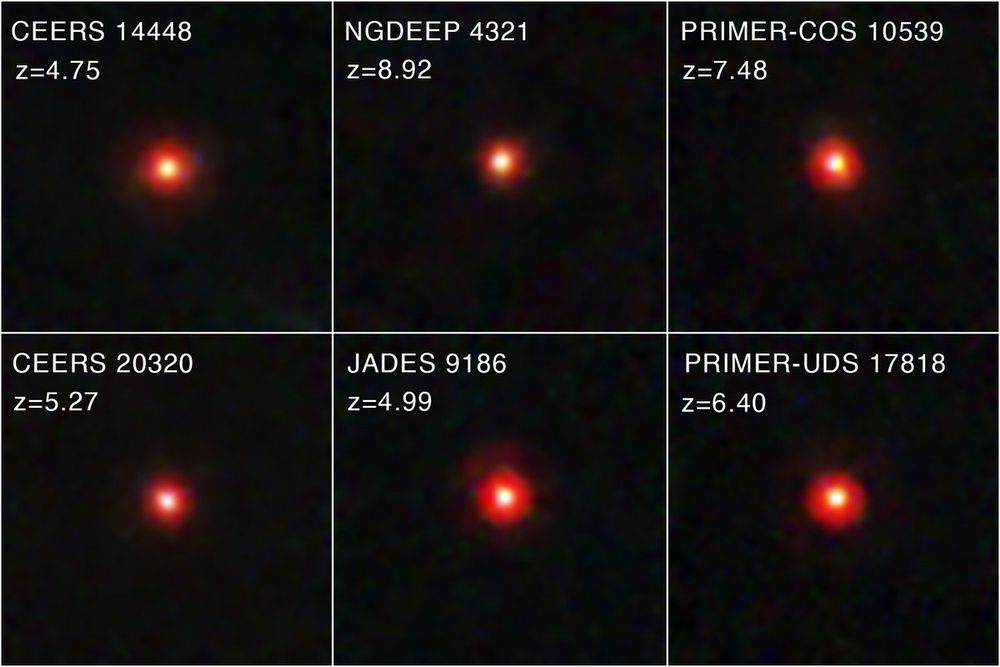
January 14, 2025 at 9:18 PM
Webb is solving mysteries it created. Remember “little red dots?” They seemed too big to exist in the early universe... and maybe theory couldn’t account for them. It turns out they may be a new class of galaxy containing growing supermassive black holes. https://t.co/OXo6TzNgus https://t.co/Y
Wolf-Rayet 140 contains two massive stars that follow a tight, elongated orbit. (In these images, they are within the central white dot.) As they swing past each other, their stellar winds collide, compressing and forming these rings of carbon-rich dust.
January 14, 2025 at 9:18 PM
Wolf-Rayet 140 contains two massive stars that follow a tight, elongated orbit. (In these images, they are within the central white dot.) As they swing past each other, their stellar winds collide, compressing and forming these rings of carbon-rich dust.
Like images of broken light, Webb captured these carbon-rich dust shells around a binary star system. Drifting swiftly outwards, they are seeding their surroundings with carbon - one way elements spread across the universe. https://t.co/gjfLhdaP1x https://t.co/rbFjcpKjgm
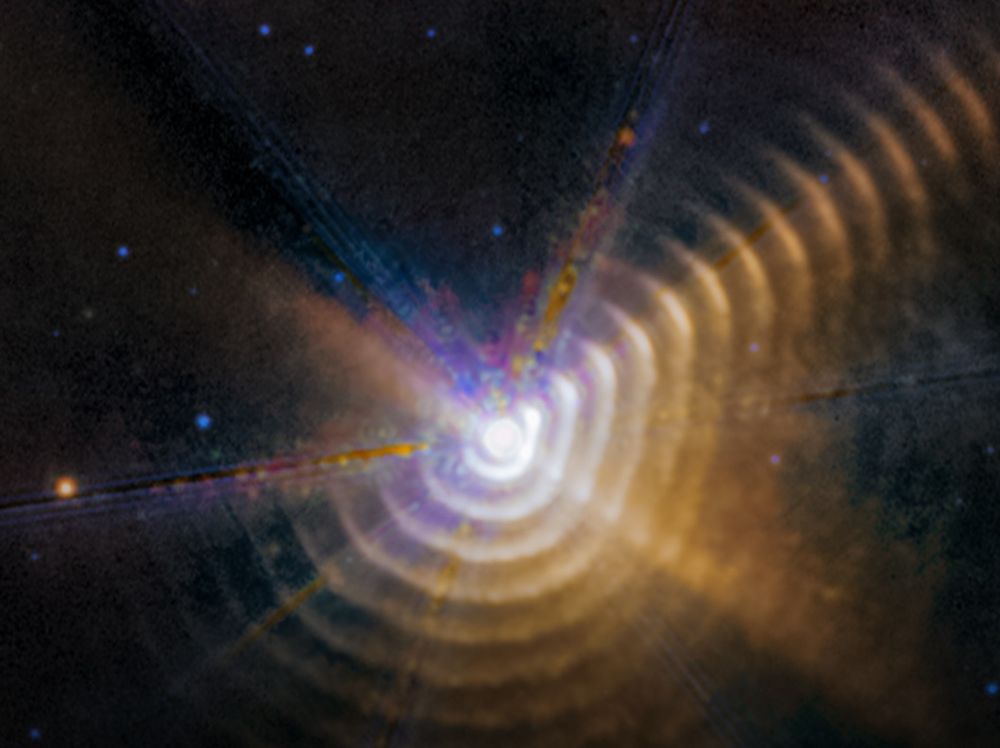
January 14, 2025 at 9:17 PM
Like images of broken light, Webb captured these carbon-rich dust shells around a binary star system. Drifting swiftly outwards, they are seeding their surroundings with carbon - one way elements spread across the universe. https://t.co/gjfLhdaP1x https://t.co/rbFjcpKjgm
@NASAHubble Webb's instruments can split up light into its components, unlocking the chemical make-up of whatever it is observing. Webb saw that the stars in star cluster NGC 346 do have longer-lived disks allowing their planets time to form and grow - despite the lack of heavier elements.
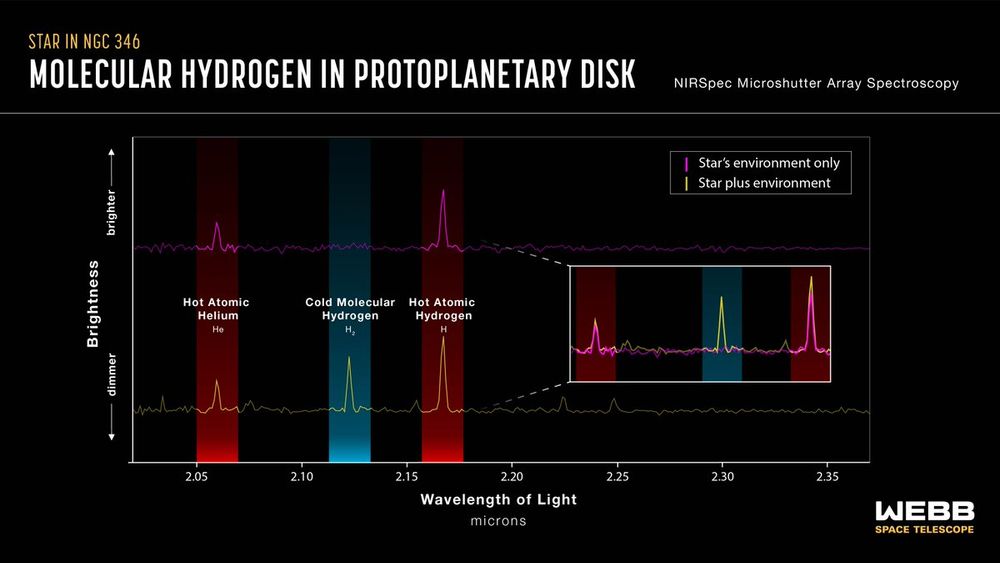
December 16, 2024 at 3:28 PM
@NASAHubble Webb's instruments can split up light into its components, unlocking the chemical make-up of whatever it is observing. Webb saw that the stars in star cluster NGC 346 do have longer-lived disks allowing their planets time to form and grow - despite the lack of heavier elements.
A riddle wrapped in a 20-year-old @nasahubble mystery…
Webb confirmed a controversial finding of Hubble’s - planet-forming disks in the early universe that are longer-lived than they should be, given the conditions in their environment. Read more: https://t.co/NVsUmuHmlf https://t.co/PYms9yaWEX
Webb confirmed a controversial finding of Hubble’s - planet-forming disks in the early universe that are longer-lived than they should be, given the conditions in their environment. Read more: https://t.co/NVsUmuHmlf https://t.co/PYms9yaWEX
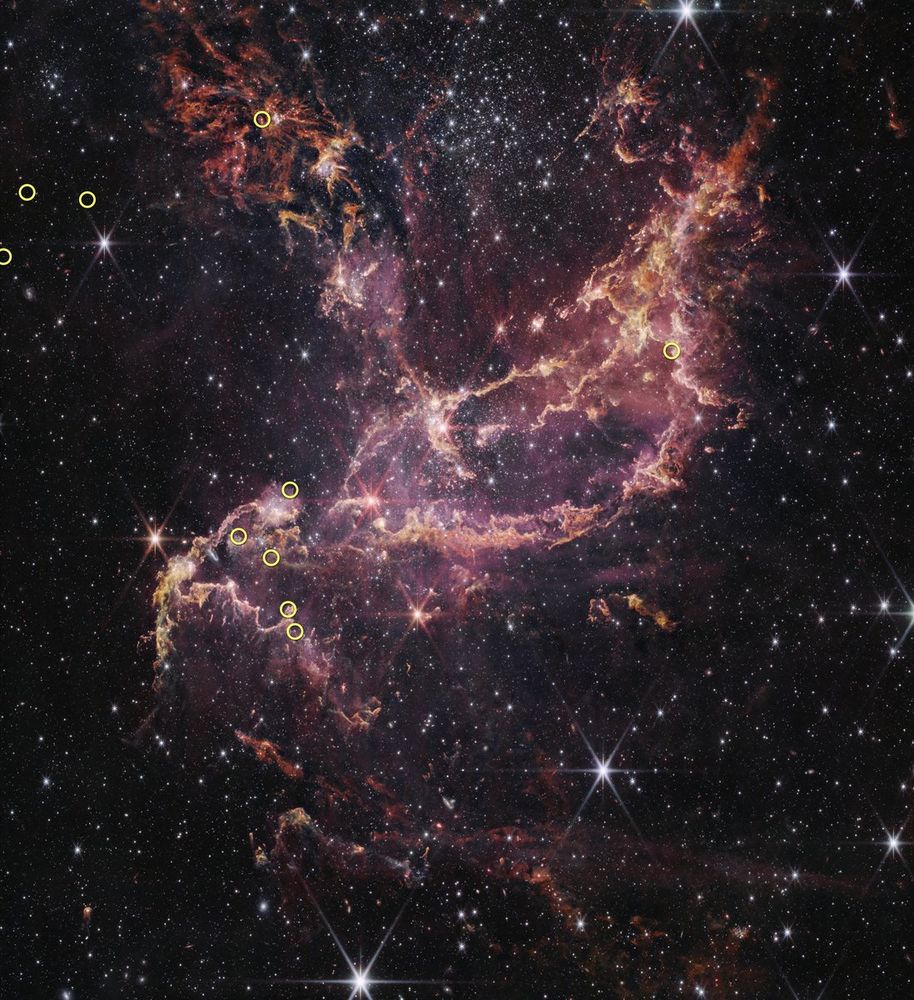
December 16, 2024 at 3:27 PM
A riddle wrapped in a 20-year-old @nasahubble mystery…
Webb confirmed a controversial finding of Hubble’s - planet-forming disks in the early universe that are longer-lived than they should be, given the conditions in their environment. Read more: https://t.co/NVsUmuHmlf https://t.co/PYms9yaWEX
Webb confirmed a controversial finding of Hubble’s - planet-forming disks in the early universe that are longer-lived than they should be, given the conditions in their environment. Read more: https://t.co/NVsUmuHmlf https://t.co/PYms9yaWEX
It's that time of year, let's make some snowflakes! ❄️
Fold and cut your own using our Webb template: https://t.co/ET8aN3vBO8 https://t.co/gJcUNdccKF
Fold and cut your own using our Webb template: https://t.co/ET8aN3vBO8 https://t.co/gJcUNdccKF

December 12, 2024 at 9:17 PM
It's that time of year, let's make some snowflakes! ❄️
Fold and cut your own using our Webb template: https://t.co/ET8aN3vBO8 https://t.co/gJcUNdccKF
Fold and cut your own using our Webb template: https://t.co/ET8aN3vBO8 https://t.co/gJcUNdccKF
The gravity of a massive foreground galaxy cluster has magnified and stretched Firefly Sparkle's star clusters into a line of bright sparks, giving it its name. For Webb to resolve a galaxy from so early in the universe, let alone to see its distinct components, is extraordinary.
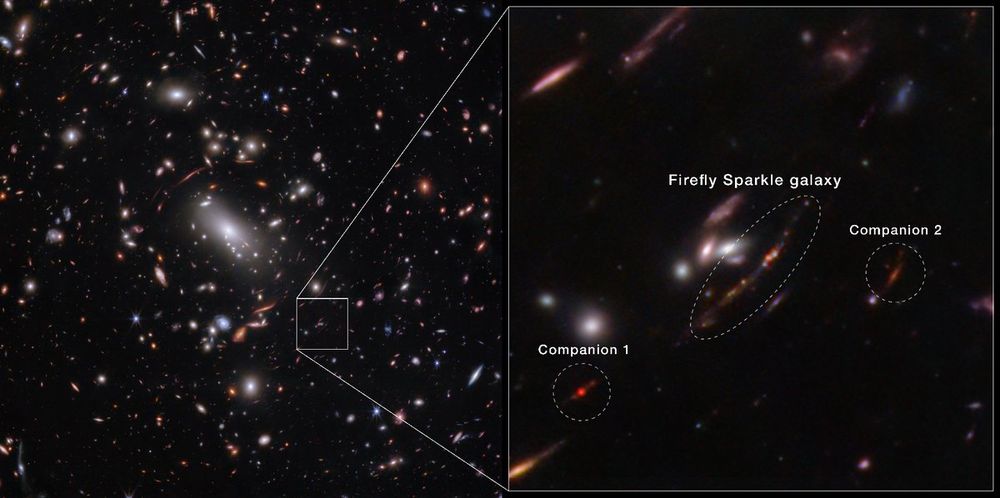
December 11, 2024 at 4:35 PM
The gravity of a massive foreground galaxy cluster has magnified and stretched Firefly Sparkle's star clusters into a line of bright sparks, giving it its name. For Webb to resolve a galaxy from so early in the universe, let alone to see its distinct components, is extraordinary.
Someone struck a match against the night…
Webb discerned distinct star clusters in the Firefly Sparkle galaxy, which existed 600 million years after the big bang - the first discovery of an actively forming galaxy as lightweight as the young Milky Way. https://t.co/cJenCOWLsc https://t.co/BWCarE
Webb discerned distinct star clusters in the Firefly Sparkle galaxy, which existed 600 million years after the big bang - the first discovery of an actively forming galaxy as lightweight as the young Milky Way. https://t.co/cJenCOWLsc https://t.co/BWCarE
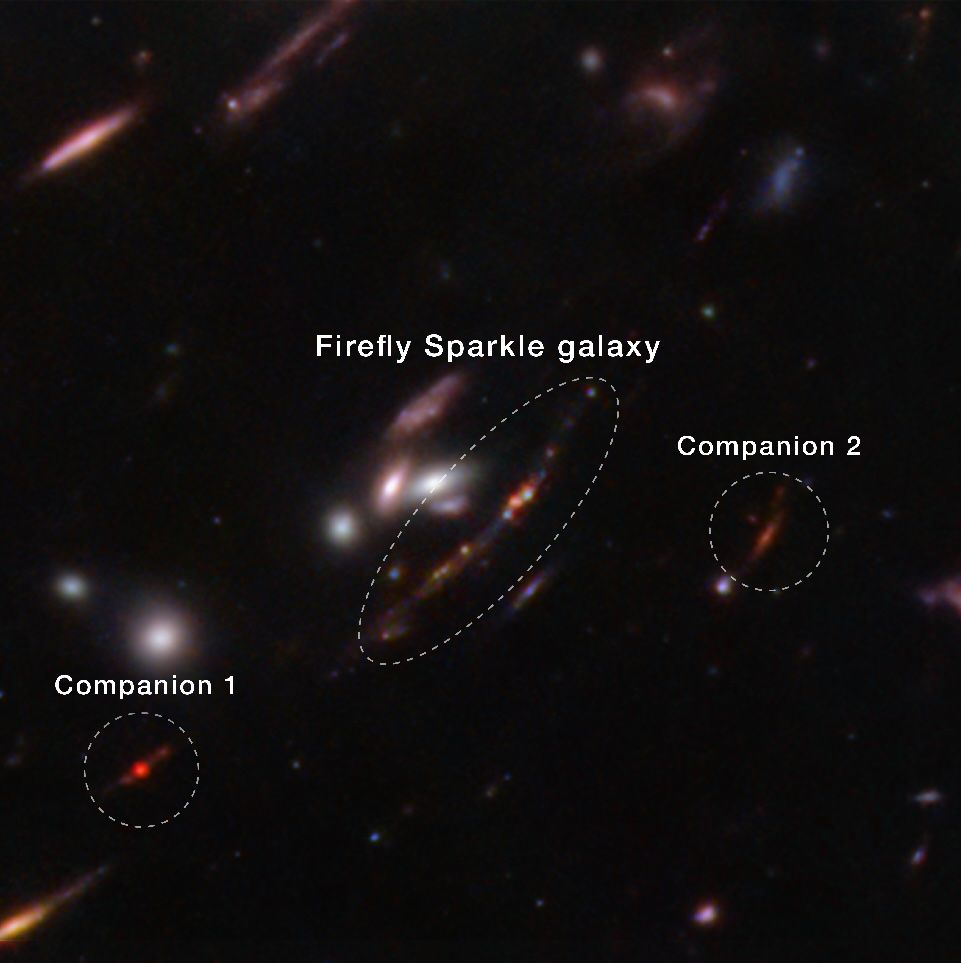
December 11, 2024 at 4:35 PM
Someone struck a match against the night…
Webb discerned distinct star clusters in the Firefly Sparkle galaxy, which existed 600 million years after the big bang - the first discovery of an actively forming galaxy as lightweight as the young Milky Way. https://t.co/cJenCOWLsc https://t.co/BWCarE
Webb discerned distinct star clusters in the Firefly Sparkle galaxy, which existed 600 million years after the big bang - the first discovery of an actively forming galaxy as lightweight as the young Milky Way. https://t.co/cJenCOWLsc https://t.co/BWCarE
The characteristics of the new galaxies Webb has spotted are shedding light on how galaxies grow and interact as clusters form. Most galaxies in local clusters are old and not very active. The ones in the Spiderweb are comparatively adolescents.
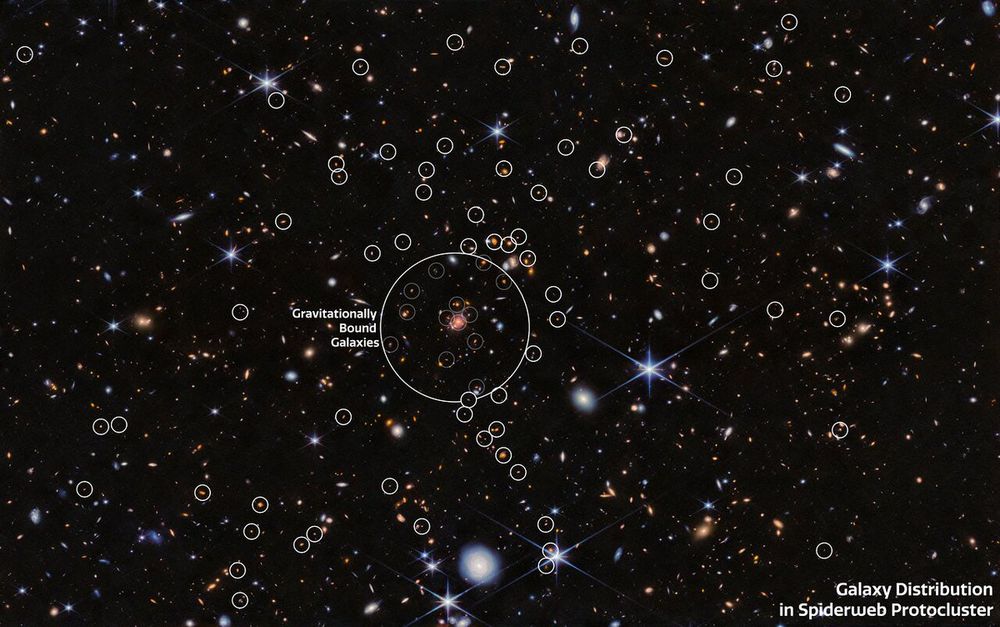
December 4, 2024 at 3:58 PM
The characteristics of the new galaxies Webb has spotted are shedding light on how galaxies grow and interact as clusters form. Most galaxies in local clusters are old and not very active. The ones in the Spiderweb are comparatively adolescents.
Webb and the Spiderweb protocluster? Let’s get stuck in! 👇
What is it? A galaxy cluster in formation, 10 billion light years away, composed of more than 100 known galaxies. Webb has found some new ones! https://t.co/LA0d0hVw3t https://t.co/gan8TOrP3Y
What is it? A galaxy cluster in formation, 10 billion light years away, composed of more than 100 known galaxies. Webb has found some new ones! https://t.co/LA0d0hVw3t https://t.co/gan8TOrP3Y

December 4, 2024 at 3:58 PM
Webb and the Spiderweb protocluster? Let’s get stuck in! 👇
What is it? A galaxy cluster in formation, 10 billion light years away, composed of more than 100 known galaxies. Webb has found some new ones! https://t.co/LA0d0hVw3t https://t.co/gan8TOrP3Y
What is it? A galaxy cluster in formation, 10 billion light years away, composed of more than 100 known galaxies. Webb has found some new ones! https://t.co/LA0d0hVw3t https://t.co/gan8TOrP3Y
In visible light, the arms of NGC 2090 are not easily traceable because of its dust and gas and its patchy dusty disk - as seen in this recent @nasahubble view. This type of galaxy is called a flocculent spiral. https://t.co/HrkdsqIhXV https://t.co/PGd9RFb2rg
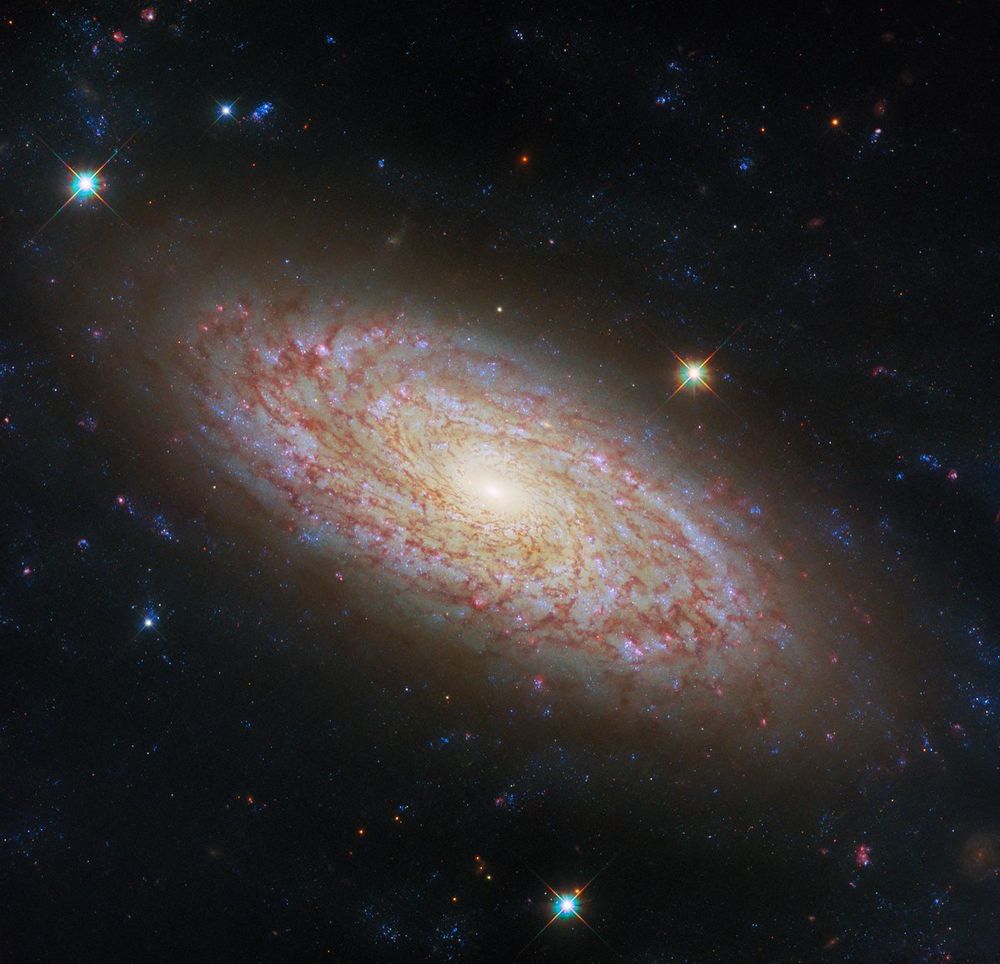
November 27, 2024 at 3:16 PM
In visible light, the arms of NGC 2090 are not easily traceable because of its dust and gas and its patchy dusty disk - as seen in this recent @nasahubble view. This type of galaxy is called a flocculent spiral. https://t.co/HrkdsqIhXV https://t.co/PGd9RFb2rg
Pardon our dust!
Webb’s near and mid-infrared view of spiral galaxy NGC 2090 highlights its two winding arms as well as the beautiful details of its swirls of dust and gas. https://t.co/5GHzbWezoX https://t.co/KNzLUvjmbk
Webb’s near and mid-infrared view of spiral galaxy NGC 2090 highlights its two winding arms as well as the beautiful details of its swirls of dust and gas. https://t.co/5GHzbWezoX https://t.co/KNzLUvjmbk
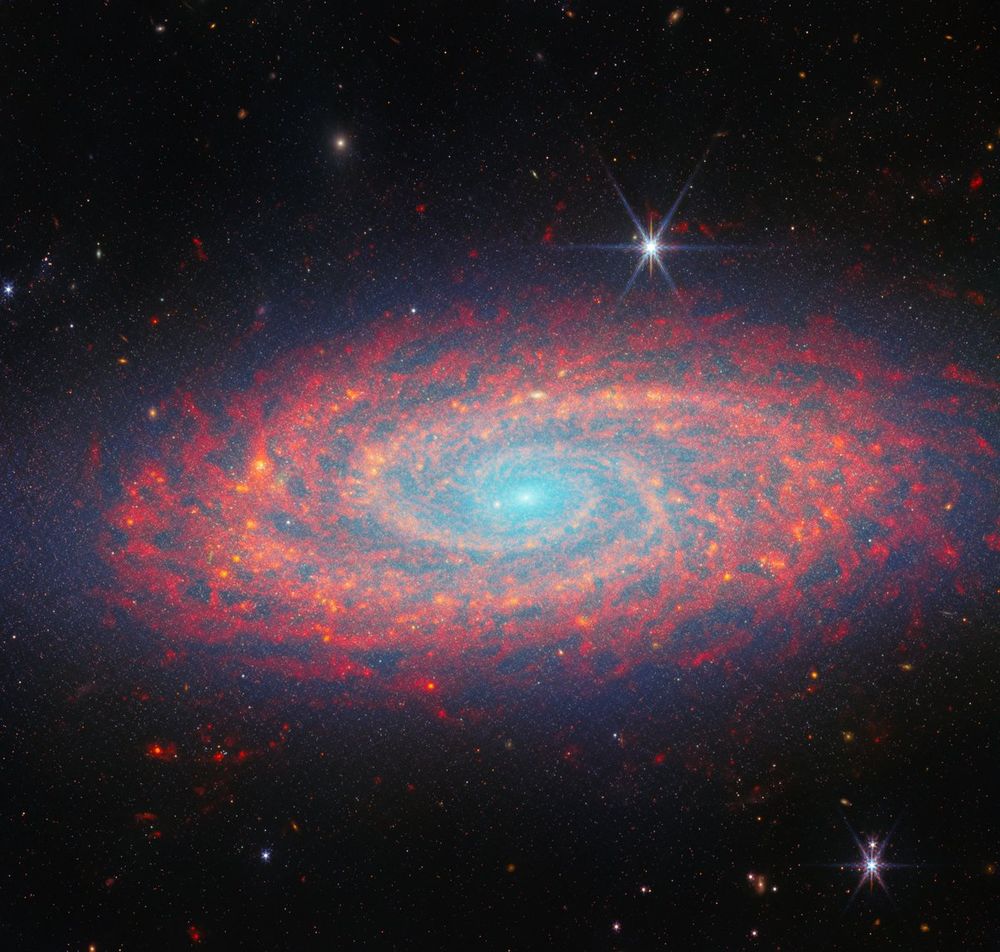
November 27, 2024 at 3:16 PM
Pardon our dust!
Webb’s near and mid-infrared view of spiral galaxy NGC 2090 highlights its two winding arms as well as the beautiful details of its swirls of dust and gas. https://t.co/5GHzbWezoX https://t.co/KNzLUvjmbk
Webb’s near and mid-infrared view of spiral galaxy NGC 2090 highlights its two winding arms as well as the beautiful details of its swirls of dust and gas. https://t.co/5GHzbWezoX https://t.co/KNzLUvjmbk
Also known as the Sombrero galaxy, M104 looks a bit more hat-like in @NASAHubble visible-light image (shown below), which showcases its prominent, glowing core.

November 25, 2024 at 4:10 PM
Also known as the Sombrero galaxy, M104 looks a bit more hat-like in @NASAHubble visible-light image (shown below), which showcases its prominent, glowing core.
Ring around the galaxy… Here’s Webb’s stunning new mid-infrared image of M104.
This bright core of the galaxy is dim in this view, revealing a smooth inner disk as well as details of how the clumpy gas in the outer ring is distributed. https://t.co/wQSE9xGTXX https://t.co/p7zNl4YSwD
This bright core of the galaxy is dim in this view, revealing a smooth inner disk as well as details of how the clumpy gas in the outer ring is distributed. https://t.co/wQSE9xGTXX https://t.co/p7zNl4YSwD
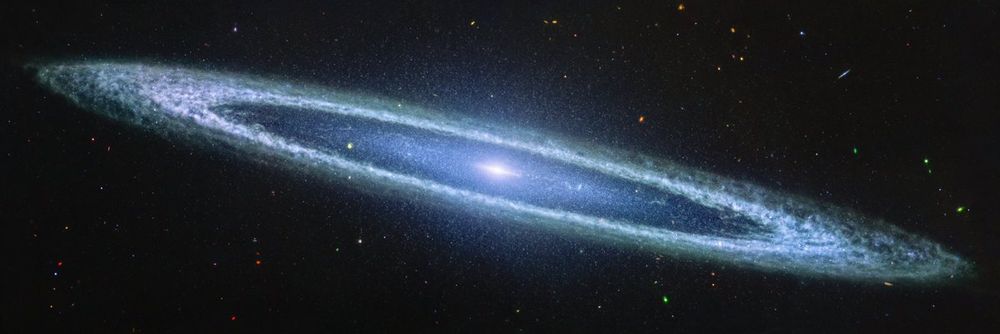
November 25, 2024 at 4:10 PM
Ring around the galaxy… Here’s Webb’s stunning new mid-infrared image of M104.
This bright core of the galaxy is dim in this view, revealing a smooth inner disk as well as details of how the clumpy gas in the outer ring is distributed. https://t.co/wQSE9xGTXX https://t.co/p7zNl4YSwD
This bright core of the galaxy is dim in this view, revealing a smooth inner disk as well as details of how the clumpy gas in the outer ring is distributed. https://t.co/wQSE9xGTXX https://t.co/p7zNl4YSwD
@NASAHubble This pair may swing by one another repeatedly over the course of many millions of years. They might eventually meld, leaving behind completely reshaped arms, and an even brighter cyclops-like “eye” at the core. The areas of star formation really pop in this mid-infrared view.
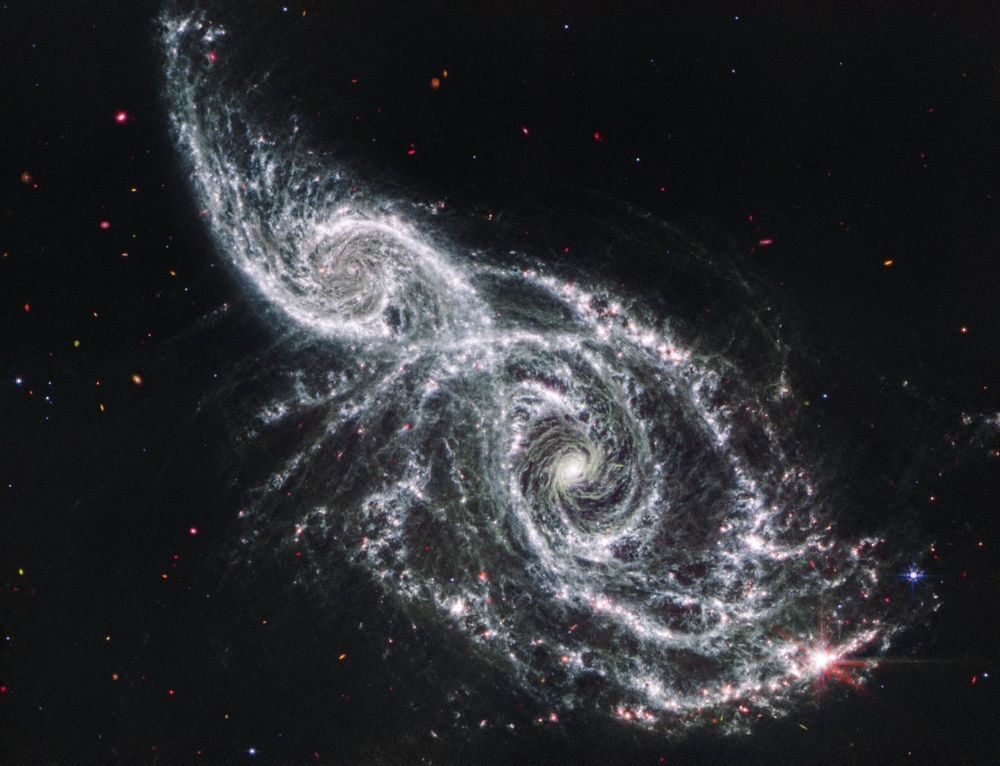
October 31, 2024 at 2:05 PM
@NASAHubble This pair may swing by one another repeatedly over the course of many millions of years. They might eventually meld, leaving behind completely reshaped arms, and an even brighter cyclops-like “eye” at the core. The areas of star formation really pop in this mid-infrared view.
@NASAHubble saw NGC 602 harboring very young low-mass stars; Webb is showing us how significant and extensive brown dwarfs may be here. This will help us understand how brown dwarfs form, particularly in an environment similar to the harsh conditions of the early Universe.

October 23, 2024 at 5:38 PM
@NASAHubble saw NGC 602 harboring very young low-mass stars; Webb is showing us how significant and extensive brown dwarfs may be here. This will help us understand how brown dwarfs form, particularly in an environment similar to the harsh conditions of the early Universe.
It’s giving rainbows and unicorns, like a middle school binder 🦄🌈
Meet NGC 602, a young star cluster in the Small Magellanic Cloud, where astronomers using @NASAWebb have found candidates for the first brown dwarfs outside of our galaxy. https://t.co/jdupXcWiAH https://t.co/v4FBxAzulj
Meet NGC 602, a young star cluster in the Small Magellanic Cloud, where astronomers using @NASAWebb have found candidates for the first brown dwarfs outside of our galaxy. https://t.co/jdupXcWiAH https://t.co/v4FBxAzulj
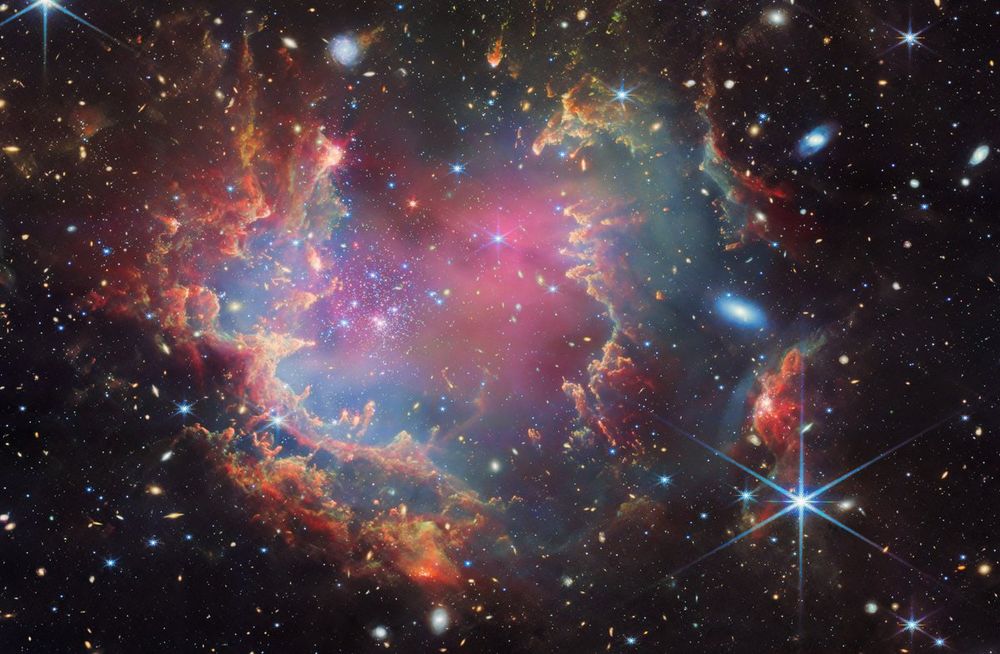
October 23, 2024 at 5:38 PM
It’s giving rainbows and unicorns, like a middle school binder 🦄🌈
Meet NGC 602, a young star cluster in the Small Magellanic Cloud, where astronomers using @NASAWebb have found candidates for the first brown dwarfs outside of our galaxy. https://t.co/jdupXcWiAH https://t.co/v4FBxAzulj
Meet NGC 602, a young star cluster in the Small Magellanic Cloud, where astronomers using @NASAWebb have found candidates for the first brown dwarfs outside of our galaxy. https://t.co/jdupXcWiAH https://t.co/v4FBxAzulj
Shopping for pumpkins this weekend? Consider carving your own James Webb Space Pumpkin! We have five Webb-related designs, with differing degrees of difficulty. If you make a Webb-related pumpkin, be sure to tag us so we can share! https://t.co/VYvv5bJgXh https://t.co/tL5Yd839Vm
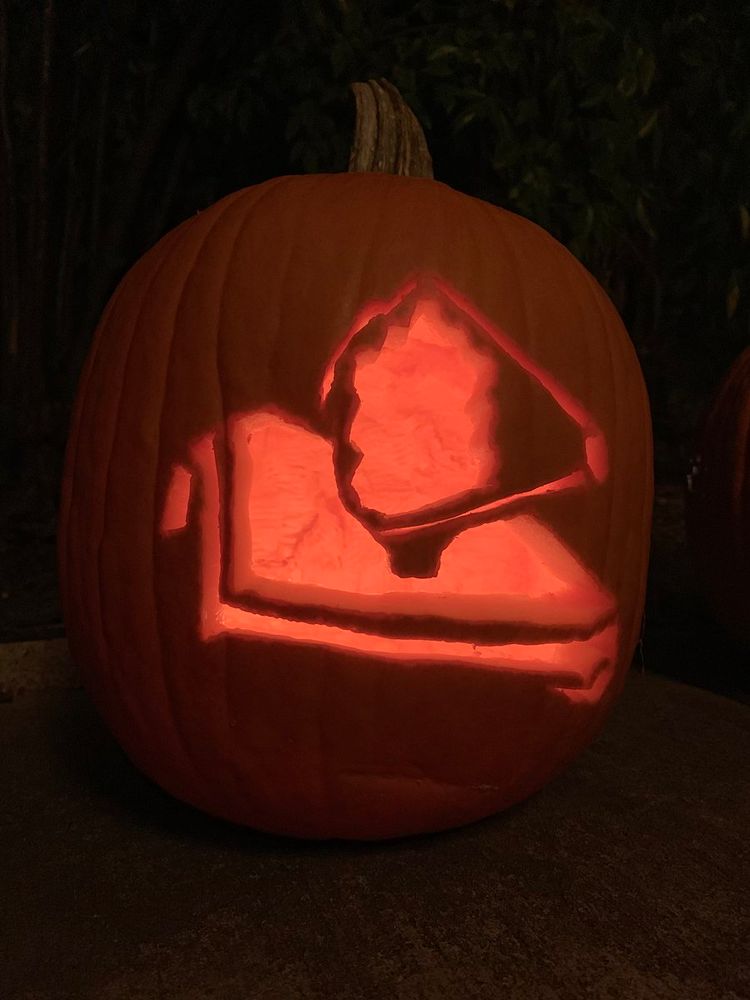
October 18, 2024 at 8:25 PM
Shopping for pumpkins this weekend? Consider carving your own James Webb Space Pumpkin! We have five Webb-related designs, with differing degrees of difficulty. If you make a Webb-related pumpkin, be sure to tag us so we can share! https://t.co/VYvv5bJgXh https://t.co/tL5Yd839Vm
Congrats to the whole @EuropaClipper team on a successful launch! We'll wave as you fly by on the way out to your planetary front row seat. We're so happy and not at all jealous 😜
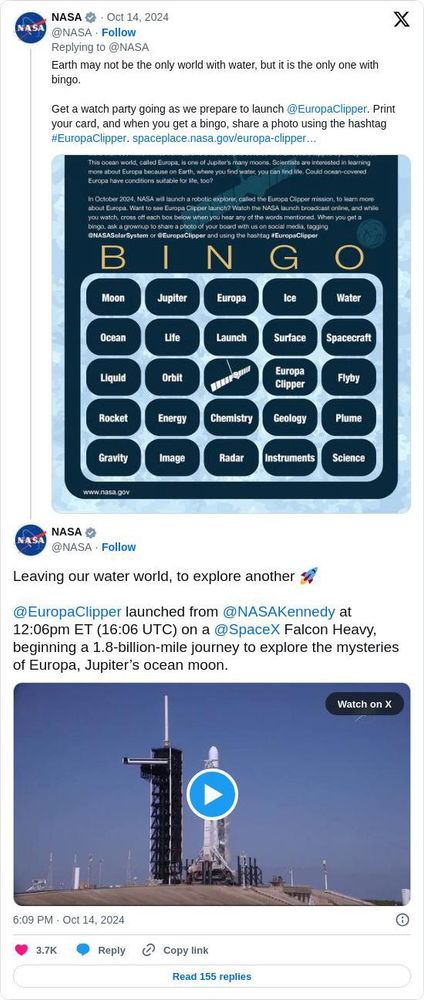
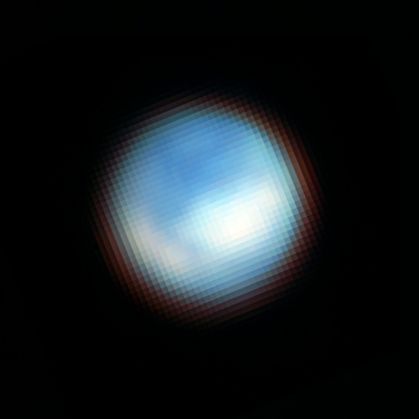
October 15, 2024 at 7:38 PM
Congrats to the whole @EuropaClipper team on a successful launch! We'll wave as you fly by on the way out to your planetary front row seat. We're so happy and not at all jealous 😜

